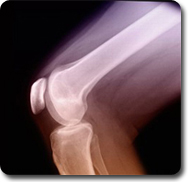 You need to have a clear idea about how your knee functions, and what might necessitate a knee replacement surgery - before actually opting to have the operation. Some basic concepts regarding knee replacement would be clarified over here:
How does the knee joint work?
The knee joint comprises the femur (the lower portion of the thighbone). The joint operates by rotating on the patella (kneecap), and the upper section of the tibia (shinbone). The articular cartilage ensures that the bone movements remain smooth and properly cushioned. The patella slides on to the lower portion of the articular cartilage.
What is the synovial membrane?
The synovial membrane is the smooth and thin line of tissues, which protects all the adjoining areas near the knee. The membrane also releases a synovial fluid, which acts as a lubricating agent for the knee joint.
When the very first knee replacement surgery was performed?
The first knee replacement operation was successfully carried out in 1968. Since then, the techniques of knee replacement have become a lot more sophisticated. Knee replacement operation is currently regarded as one of the breakthroughs in medical science, in the 20th century.
What factors can necessitate a knee replacement surgery?
Acute arthritis (general osteoarthritis (more common among elderly people), or arthritis caused by rheumatism and/or post-accident trauma).
- Unbearable knee pains (generally stemming from arthritis).
- Torn knee ligaments
- Tears in the meniscus
- Problems in knee cartilages
- Significant deformity
- Stiffness in the knee area
- External injuries
N.B: Contrary to what many believe, osteoporosis DOES NOT require a knee replacement surgery.
What are the general effects of a knee deformity?
- Acute pain, even while you are lying on the bed, or sitting on a chair
- Problems in locomotion, particularly while climbing stairs
- Problems in locomotion, particularly while climbing stairs
- Relapse of knee pains, even after taking medications and following physiotherapy sessions
What are the types of knee replacement surgery?
Knee replacement surgery can be of two types, which are:
- Partial knee replacement surgery
- Total knee replacement surgery
What is the objective of a knee replacement surgery?
This operation is performed to insert medically approved plastic/metal joints, in place of your defective knee joints. When done in the proper manner, the surgery helps you to recover your powers of pain-free locomotion, within a relatively short time-span.
When is Total Knee Replacement necessary?
- When your knee pains are not getting reduced by general medications.
- When you require a quick and seamless relief from deep-seated arthritis problems.
- For removal of knee stiffness and deformities.
- When you are intolerant/allergic to antibiotics for reducing knee inflammation.
- When partial knee replacement would not properly rectify your condition (as decided upon by surgeons, physiotherapists, and other qualified medical experts).
WORD OF CAUTION:
Total knee replacement cannot make you fit enough to take part in athletic events, or other such highly strenuous activities. You need to stay away from certain activities, for the rest of your life. We will come to that later.
What does the knee replacement surgery involve?
- Creating an incision along the middle portion of the affected leg(s)
- Analyzing the defective surfaces, to determine which parts of the knee joint have to be replaced
- Insertion of metal/plastic trough on the surface of the tibia
- Insertion of a stable metal shell, near the lower edge of the femur
- Protecting the kneecap with a plastic button (if required)
N.B: A standard knee replacement surgery requires a time of around two hours.
What are the types of knee prosthetics available?
- Prosthetics that are based on the natural ingrowths mechanism of bones
- Prosthetics that utilize medical cement to bind the joint components together
Note: Screws can be used with the first category of knee prosthetics, to keep the shinbone stabilized.
What are the basics of post-operative care after a knee replacement surgery?
- Continuous physical rehabilitation.
- Starting to walk with mobility supports (like canes, frames, and crutches).
- Gradual return to walking without external aids.
N.B: The total recovery process from a knee replacement operation takes a minimum of six weeks.
What are the activities you need to avoid after the surgery?
- High-impact sporting activities.
- Jogging and sprinting.
- Putting heavy pressure on the replaced joints in your knee.
You can, however, easily participate in light sporting activities, like bowling and playing golf. Have thorough knowledge about the knee replacement surgery, and the post-operative care required after the operation. Follow your doctor's advice – and ensure that the artificial joint(s) last for many years.
|

 You need to have a clear idea about how your knee functions, and what might necessitate a knee replacement surgery - before actually opting to have the operation. Some basic concepts regarding knee replacement would be clarified over here:
You need to have a clear idea about how your knee functions, and what might necessitate a knee replacement surgery - before actually opting to have the operation. Some basic concepts regarding knee replacement would be clarified over here: